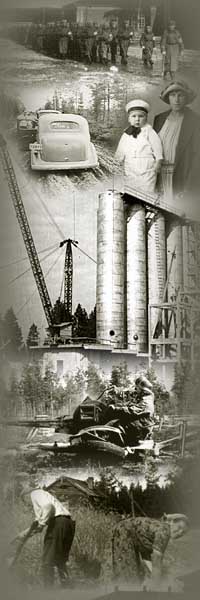 |
 |
|
Summary:
Ritva Kylli, ”Girls know how to knit well”. The Sami Women in 19th-century Utsjoki
All priests active in the parish of Utsjoki in 19th century Finland had moved there from southern Finland.
While working in Lapland, they attempted to imprint their native Finnish culture among the Sami and recorded
details of life in the Sami culture into written form. In addition to interpretations made by priests, there
are very few sources of information on the lives of Sami women, inhabitants of a non-literate culture. 19th
century Sami women were hard-working, earning respect from the priests, who embraced a Lutheran work morality.
Sami men, however, were found somewhat less industrious. The fact that Sami men worked mostly outside the home,
and, on the other hand, that the priests observed the lives of the Sami especially inside the home, resulted in
an image of hard-working women in the minds of the priests. The priests also admired their skills in handicraft,
even though its methods and products differed from what the priests had become accustomed to in Finland.
Sami girls were raised from very young to be able to fulfil the role set for women by their communities. The social
status of a Sami woman in Utsjoki, however, varied according to whether she belonged to the reindeer-herding Sami or the fisher
Sami, or whether she was perhaps a servant, and if she was single or married. Despite heavy workload in families and
difficulties involved in attempts to deviate from the gender role, the rather strict distribution of work does not
necessarily have to be understood as a limiting factor in the lives of Sami women. They held an acknowledged position in
their communities, and womenfolk of the reindeer-herding Sami especially were often also financially independent due to
their inherited reindeer stock.
On the other hand, gender equality was not among the most pressing of issues from the point of view of the 19th
century Sami eking out their livelihoods in a semi-arctic region. Although the gender roles were very restricting, they
also complemented each other. In a subsistence-barter community supporting itself in a close relationship with nature,
sharing the workload between all members of community was essential. Men and women needed to have clearly defined roles
in order to enable each member of community to know his or her tasks and complete them in time. Although women’s sphere
of living was significantly smaller in comparison with what was considered men’s domain, they wielded considerable power
in the home, and rarely hesitated to use it.
The Sami women of the past have been marginalised in a number of ways. Both women and the Sami in general were
considered a topic of minor interest for serious study of history, and the histories of 19th-century Sami are by and large
histories of Sami men. The invisibility of the Sami women is particularly noticeable in church records and documents from
official authorities. The sources most often used by historians are from the spheres of administration, state and economic
authorities – areas of life where women of the time had very little influence. Unofficial private sources, such as diaries
and memoirs, contain some limited information on their lives, but even there the Sami women rarely appear using their own names.
Faravid
31/2007
|
 |